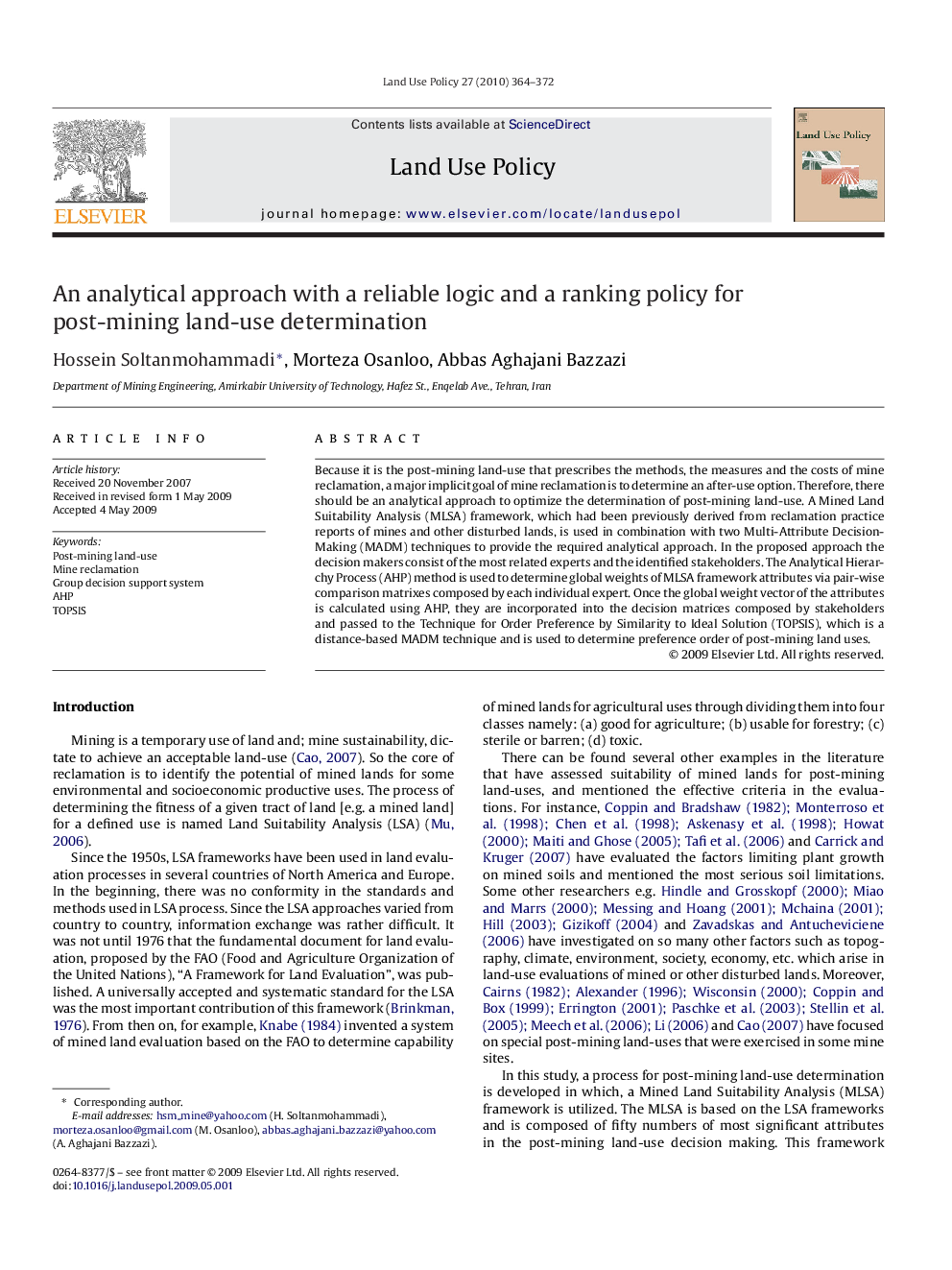| Article ID | Journal | Published Year | Pages | File Type |
|---|---|---|---|---|
| 93531 | Land Use Policy | 2010 | 9 Pages |
Because it is the post-mining land-use that prescribes the methods, the measures and the costs of mine reclamation, a major implicit goal of mine reclamation is to determine an after-use option. Therefore, there should be an analytical approach to optimize the determination of post-mining land-use. A Mined Land Suitability Analysis (MLSA) framework, which had been previously derived from reclamation practice reports of mines and other disturbed lands, is used in combination with two Multi-Attribute Decision-Making (MADM) techniques to provide the required analytical approach. In the proposed approach the decision makers consist of the most related experts and the identified stakeholders. The Analytical Hierarchy Process (AHP) method is used to determine global weights of MLSA framework attributes via pair-wise comparison matrixes composed by each individual expert. Once the global weight vector of the attributes is calculated using AHP, they are incorporated into the decision matrices composed by stakeholders and passed to the Technique for Order Preference by Similarity to Ideal Solution (TOPSIS), which is a distance-based MADM technique and is used to determine preference order of post-mining land uses.
